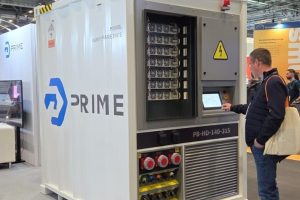E-SELF project: Ford cars could soon drive themselves off the assembly line

For more than 100 years, vehicles around the world have been rolling off Ford assembly lines. Until now, there has been somebody at the wheel, but this could soon be about to change. Ford is trialling AI-powered automated driving technology designed to make the process more efficient. For the project, vehicles not only drive themselves off the assembly line, they also self‑drive to final testing stations and self-charge before parking up ready for delivery to customers.
The E-SELF project is among a range of initiatives that Ford is exploring as it prepares the Ford Cologne EV Centre, in Germany – subject of a $2 billion investment – where EV production will begin this year.
“Ford is reinventing its portfolio of vehicles in Europe and exploring how we produce our new EVs is integral to that process,” said Ford project lead Frank Schwarz. “Introducing self-driving technology to the assembly line could support efficiency and safety while enabling employees to focus on critical tasks.”
Last month, Ford unveiled the new all-electric Explorer that will be the company’s first electric passenger vehicle to be built at scale at the Ford Cologne EV Centre. By 2026, Ford plans to sell 600,000 EVs in Europe each year and is committed to offering an all-electric portfolio of passenger vehicles by 2030.
Ford is conducting the two-and-a-half-year trial with partners Institute of Automotive Engineering of the Technische Universität Braunschweig and Kopernikus Automotive. The Federal Ministry of Economy and Climate Protection provided €2 million funding.
The E-SELF project uses vehicle-to-infrastructure communication to control and monitor vehicles. Sensors located around the plant can identify hazards in the vehicle’s path, such as a person or another car, and vehicles are slowed or brought to a halt as required.
Final testing alone can involve a dozen or more trips between different locations before vehicles are parked up ready for collection and delivery by road, rail and ferry. Using AI technology, those vehicles would simply drive themselves and be charged and ready to go. It works for all vehicles equipped with an automatic transmission, electronic stability control, an electric handbrake and assisted steering; the only additional requirement is a smart communication unit to enable the interaction with the infrastructure.



















